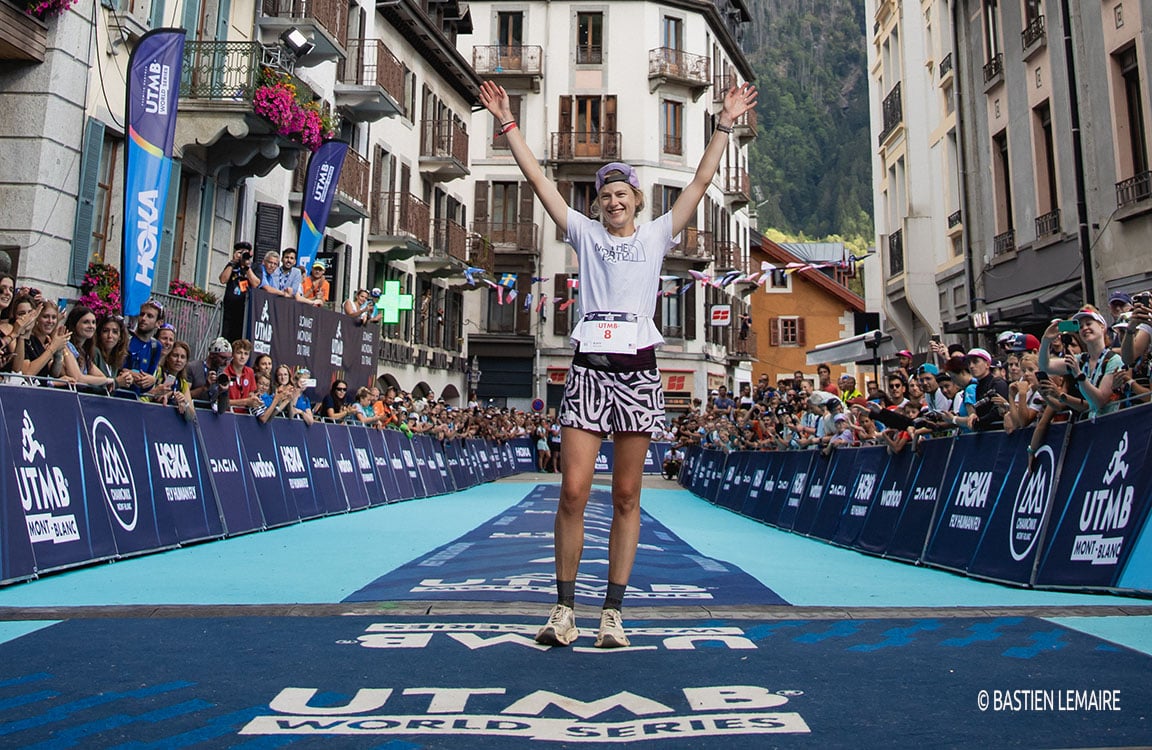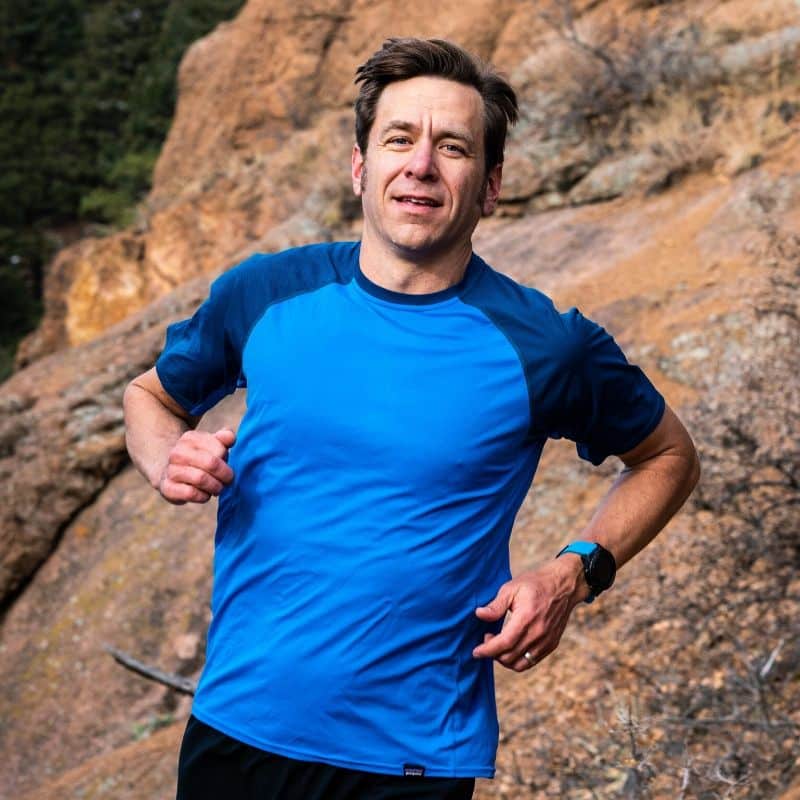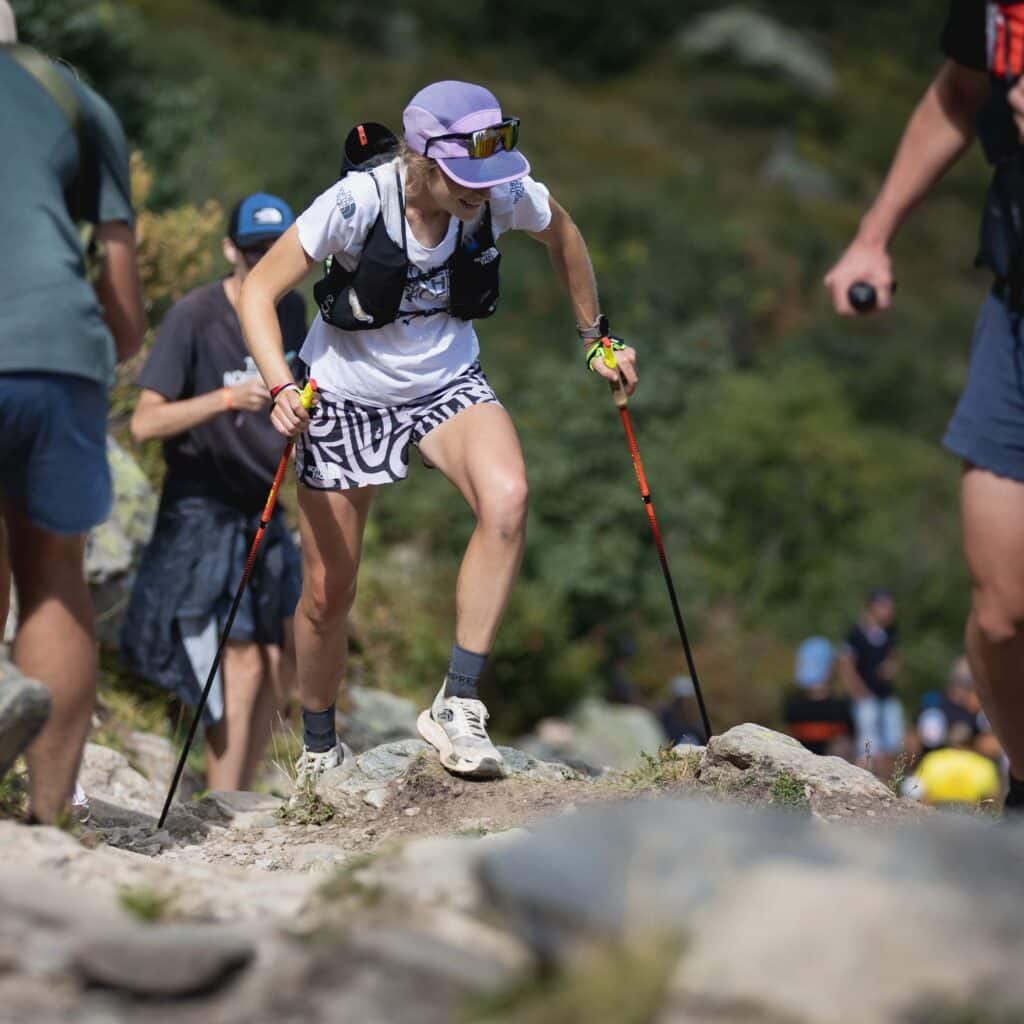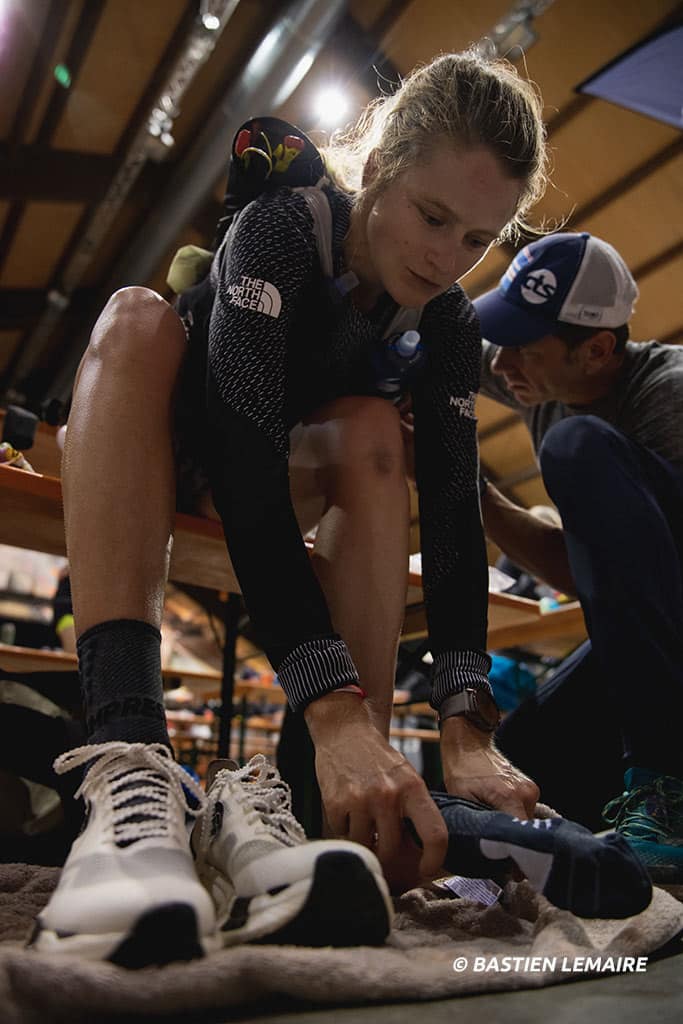
How CTS Coaches Prepare Athletes for the Unique Demands of UTMB
By Jason Koop,
Head Coach of CTS Ultrarunning
Author of “Training Essentials for Ultrarunning”
More than 40 CTS Athletes are gathering in the Chamonix for the 2024 Ultra-Trail du Mont-Blanc (UTMB) races, including the entire elite women’s podium from Western States: Katie Schide, Fuzhao Xiang, and Eszter Csillag. I have attended UTMB multiple times to support athletes and it’s always a highlight of my year. This year, seven CTS Coaches will also be attending the races to support athletes. If UTMB is on your bucket list or it’s a likely race for next season, here are some insights into how we prepare elite and age group runners for the event.
About UTMB
The Ultra-Trail du Mont-Blanc is the most prestigious international ultramarathon event. It is comprised of eight separate trail races, ranging from 20 to 300 kilometers, that partially of completely circumnavigate Mont Blanc. In 2021, the event was renamed the UTMB World Series Finals and there are now 43 UTMB World Series events worldwide that provide opportunities to earn a “UTMB Index” to qualify for the Series Finals in the 100M, 100K, or 50K categories. Athlete can also qualify by earning “stones” through competing in UTMB World Series races in the 20K, 50K, 100K or 100M categories. UTMB is the final for the 100M category, CCC (Courmayeur – Champex – Chamonix) is the final for the 100K category, and OCC (Orsières-Champex-Chamonix) is the final for the 50K category.
Qualifying to compete in the events in Chamonix can be a long and difficult process. Combined with the expense and complexity of travel, racing UTMB can be a once-in-a-lifetime goal for amateur ultramarathon runners. For the elites, winning or standing on the podium at UTMB, CCC, or OCC can be a career-making achievement. The stakes are high for all athletes, so it is crucial to tailor training, education, and preparation specifically for the demands of UTMB.
Elite CTS Athletes to watch at UTMB
- Katie Schide (USA)
- Fuzhao Xiang (CHN)
- Eszter Csillag (HUN)
- Abby Hall (USA)
- Lucy Bartholomew (AUS)
- Jiasheng Shen (CHN)
- Germain Grangier (FRA)
- Anna Li (CHN)
- Alyssa Clark (USA)
- Gediminas Grinius (LTU)
- Jeff Mogavero (USA)
Here are some of the unique aspects of UTMB and how we prepare athletes for them.
Relentless Terrain
Few runners in North America have access to trails that are even remotely similar to what they encounter in France, Italy, and Switzerland during UTMB. These mountainous trails are hundreds of years old and were not designed for sport. There is not a lot of “flow” and there are lots of abrupt changes in direction and surface. As a result, it’s difficult to get in a rhythm and runners almost always find their pace on course is slower than their normal training pace at the same perceived effort. The trails aren’t exceptionally technical, but the climbs and descents are very long (in distance and duration and vertical relief), which is difficult for athletes to replicate in training.
What we do about it
The first thing we do is educate athletes who will be traveling to UTMB for the first time. It is important to be mentally prepared for the effect the terrain will have on pacing. For instance, even the elites who go early to train on the course experience about a 20% decrease in weekly mileage when we keep their weekly training hours the same. This can be psychologically detrimental if athletes evaluate their fitness or readiness to compete based on their training paces, and don’t adjust them those expectations for the environment.
From a training perspective, we try to match the vertical gain and loss per mile from the race during the course of their weekly training. Ideally, this is accomplished with mostly outdoor running, but athletes without access to hilly or mountainous terrain can accomplish their vertical gain and loss using treadmill running or a combination of outdoor and indoor running. Specificity is more important than extreme vert, meaning runners are better off training on grades similar to what they’ll experience during races (e.g., up to about 20% grade) rather than cranking a treadmill as high as it will go, using a gym stair climber, or finding a ridiculously steep local trail with the express intent of accumulating vertical gain.
Intermittent Altitude Exposure
Runners reach elevations above 2400 meters (7874 feet) four times during UTMB and twice in CCC, and OCC runners top out at 2200 meters (7218 feet) above sea level. The start/finish areas are at about 1000-1200 meters (3280-3937 feet) above sea level. For context, athletes normally start experiencing altitude-related changes in performance at about 1500-2000 meters (5000-6500 feet). This means UTMB competitors feel the hypoxic effects of altitude exposure during portions of their races but not the whole time. This is unlike the Leadville 100 Run, for instance, where the entire course is between 9,000-12,000+ feet in elevation.
What we do about it
Not much. We don’t normally recommend altitude training camps or sleeping in altitude tents as a specific component of UTMB preparation. On one hand, the altitude exposure during the races is not significant enough to make altitude preparation necessary. Perhaps more important, though, is that altitude interventions are always disruptive – either to training directly or through compromised sleep and recovery. Considering the intermittent nature of altitude exposure at UTMB, we prefer to focus on fundamental, high-quality training. It’s a game of probabilities: for UTMB specifically, better training has a higher probability of successfully improving performance compared to the potential gains a runner might achieve through altitude interventions.
Näak Nutrition Sponsorship
Athlete compatibility with the sports nutrition products supplied at aid stations is a factor for all races. For UTMB, the nutrition sponsor is Näak. It is a Canadian brand and it is available in the United States, but many North American runners are still unfamiliar with it. A unique aspect of Näak’s products is the amount protein included across their product line, including their sports drink. If athletes are accustomed to or seeking carbohydrate-electrolyte only nutrition products, they just need to be aware of what will be available on course.
► Free Ultrarunning Training Assessment Quiz
Take our free 2-minute quiz to discover how effective your training is and get recommendations for how you can improve.
Aid stations at UTMB are also a bit different than North Americans may be accustomed to. There are two types of aid stations: Fluid supply and Major Aid Stations. The food options at the smaller fluid supply aid stations are limited (e.g., soup, rice). Major aid stations have more food options, but still not the smorgasbord – including on-demand cooking of grilled cheese or ramen – runners might expect from North American ultras.
What we do about it
We recommend runners prepare to carry specific sports nutrition products they want to use during the race. This can include sachets of drink mix, energy gels, chews, etc. Athletes with support can also resupply at aid stations accessible by crews. It is important to note that only one support person is allowed into the aid station to assist a runner! This means no NASCAR-style pit stops with five crew members tending to an athlete.
Mandatory Equipment and Overnight Run
There are not many North American ultras that require runners to carry a specific list of mandatory equipment throughout the race. It is more common for European races, particularly in mountainous regions. The list of mandatory equipment for UTMB is extensive enough that it will add significant weight to a runner’s pack. Based on finish times, runners can also expect to run through one or two nights.
Enjoying This Article? Get More Free Running Training Tips
Get our coaches' best training advice, delivered straight to your inbox weekly.
What we do about it
Running with a fully loaded pack is important race-specific training for UTMB. As we talked about in a recent article, the pack should ideally be less than 10% of an athlete’s body weight. This can be difficult for smaller, lighter athletes because the weight of the mandatory equipment doesn’t scale down much for smaller athletes. It is also important to be proficient with the organization, packing, and use of all the mandatory gear. With the certainty of at least one overnight run, it is crucial to both train at night and to dial in lighting options.
No Pacers
Pacers are not allowed at UTMB (other than spectator run zones near aid stations). Pacers are part of the ultrarunning culture in North America but they are rarely allowed in European races. Katie Schide, who has lived and competed in Europe for much of her career, used a pacer for Western States in 2023 but realized she felt more confident running without having to consider what a pacer needed or was trying to do to help her for her 2024 campaign.
What we do about it
For runners who are accustomed to relying on pacers, running an ultramarathon without one can be intimidating. Learning to be self-reliant is an important aspect of preparing for UTMB. As a result, we recommend runners complete at least one race without a pacer during their training period.
Summary
According to the organization, the Ultra-Trail du Mont-Blanc races attract 10,000 runners and perhaps more than 100,000 supporters and spectators. It is an exciting and sometimes overwhelming environment, and it can also be one of the best experiences of a runner’s sporting life. The important thing is to go into the event with as much knowledge, fitness, and support as possible. That’s why seven CTS Coaches will be on the ground in Chamonix to look after the 40-plus CTS Athletes who will compete across the various UTMB races in 2024!



